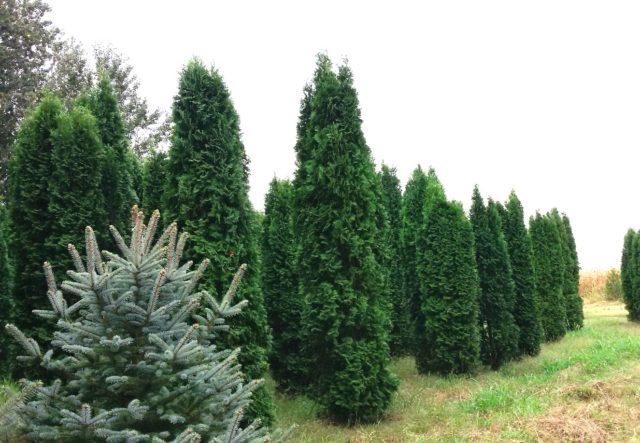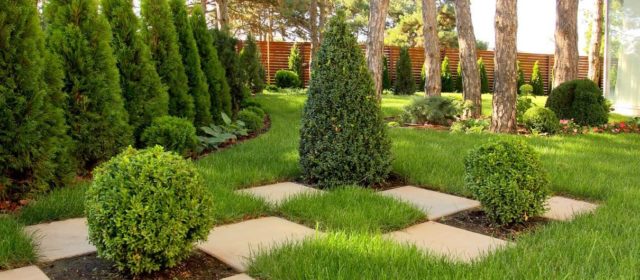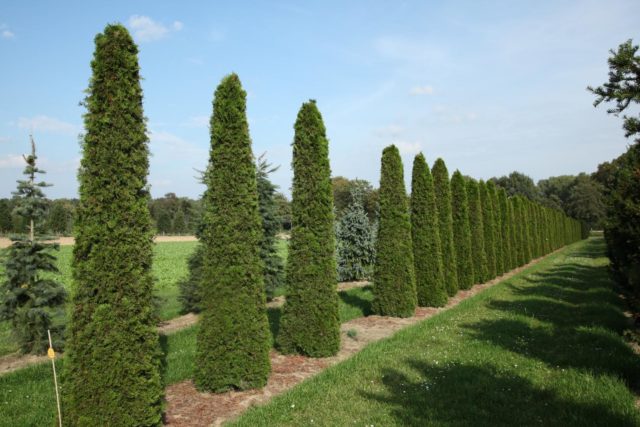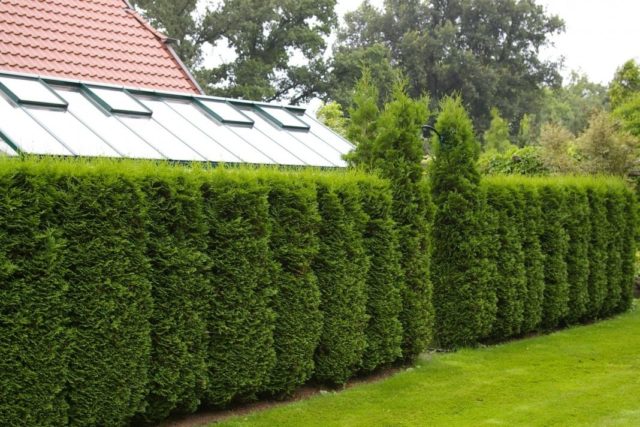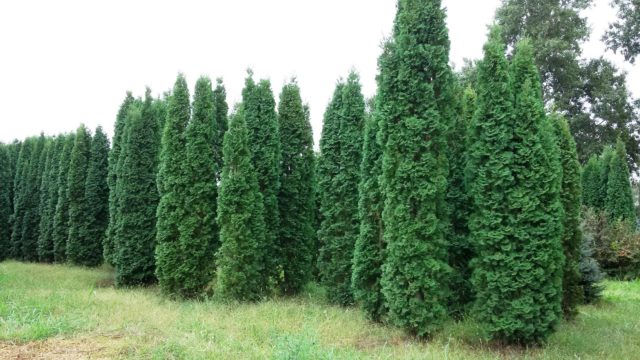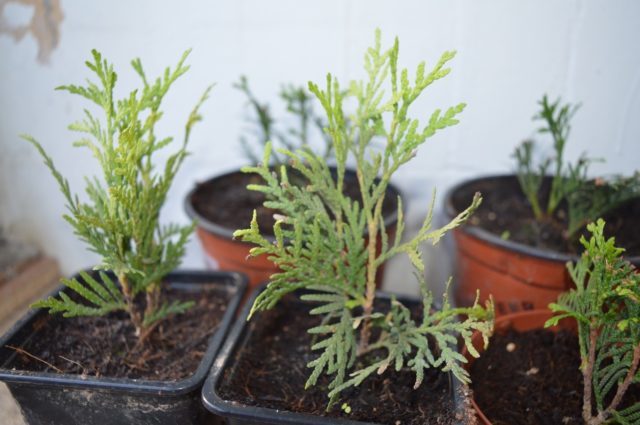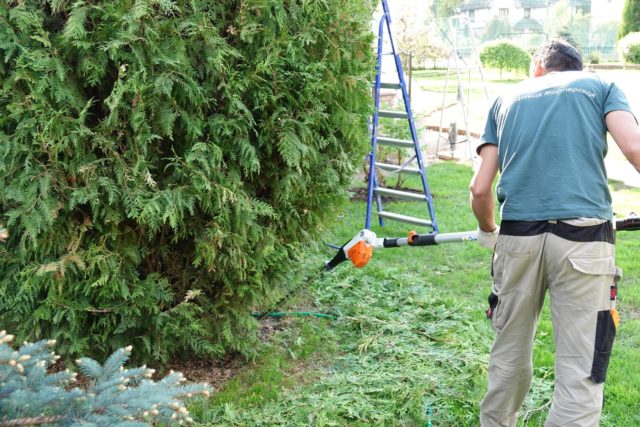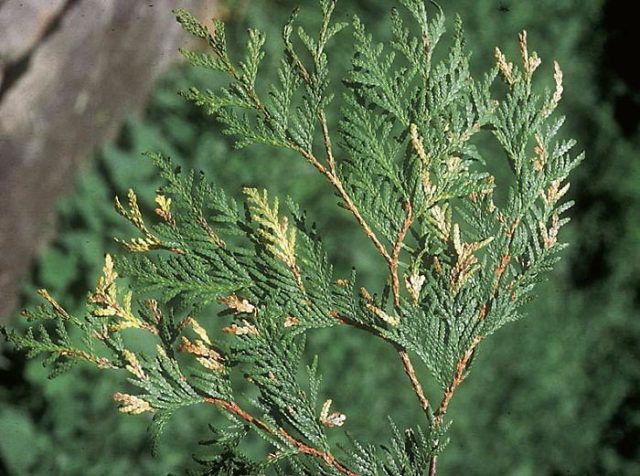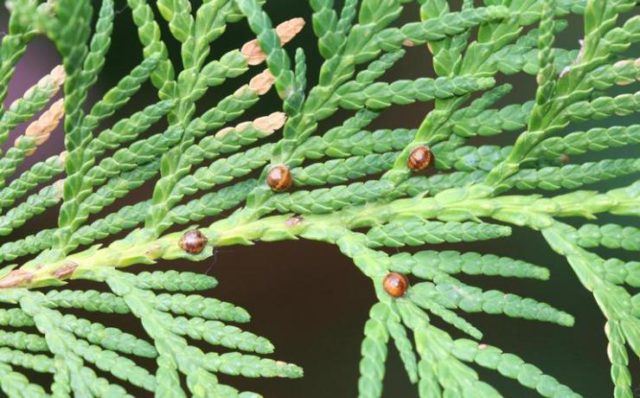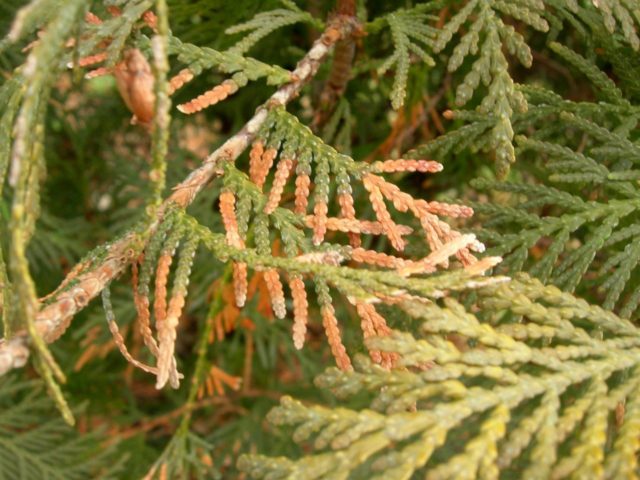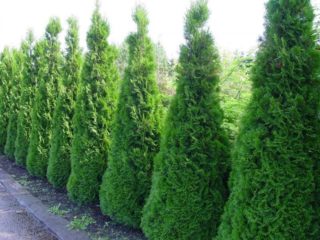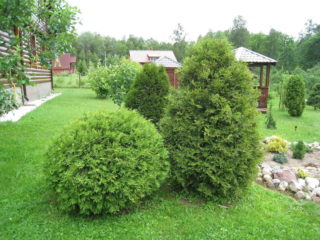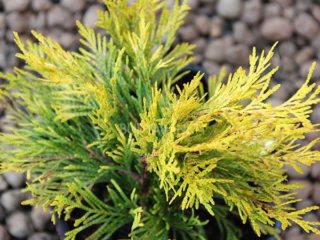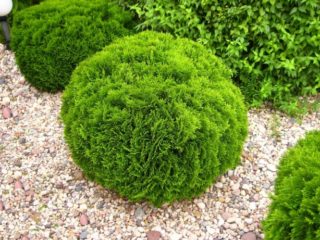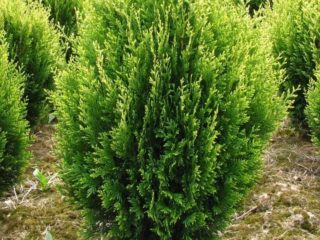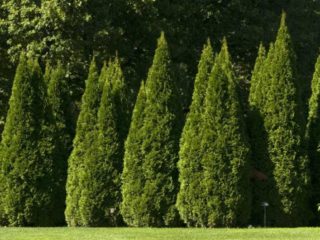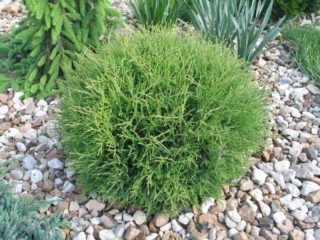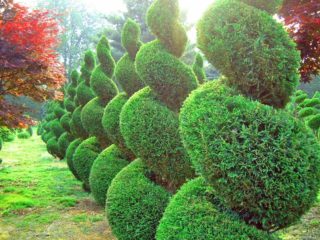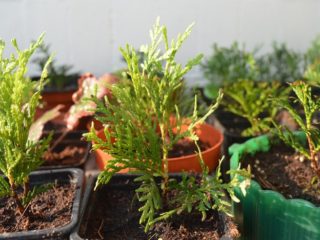Content
Thuja Columna is a beautiful evergreen tree that is ideal for decorating a site, a park, and is widely used in landscape design. Despite the fact that this variety of thuja is quite unpretentious, proper care will help it remain healthy for a long time.
Description of Thuja Columna
Western Thuja Columna (occidentalis Columna) is an evergreen tree of the Cypriceae family. Despite the fact that the birthplace of this culture is North America, it has gained popularity all over the world. It can be found in suburban areas, city parks, and public gardens. And all thanks to the endurance and decorativeness of this variety.
Thuja Columna is characterized by a columnar crown, the needles are thick and shiny, and have a rich green tint. In winter, the color of the foliage becomes brown, but with the onset of the first warm weather it turns green. Thuja Columna needles sit on short branches in the shape of a cylinder; they extend parallel to the ground and fit tightly to the wood.The bark of Thuja Columna has a brownish-red hue.
Thuja of this variety grows up to 10 m in height and is considered a long-liver - with proper care, it lives on average about 200 years.
The growth rate of thuja Columna averages up to 30 cm per year. Thus, literally in 10 years the height will be about 3 m.
Among the advantages of this variety:
- high growth rate;
- preservation of decorative qualities even in the absence of a haircut;
- low maintenance requirements;
- Thuja Columna is a long-liver;
- ideal variety for creating hedges;
- high frost resistance.
The use of thuja Columna in landscape design
Evergreen thuja Columna are an integral part of landscape design. Due to their beautiful appearance, they can be combined with other plants, and with proper care, Columna will delight you with its appearance for many years.
Thuja Columna hedge
Thujas are most often used to create a beautiful hedge. Such a green fence has the following advantages:
- unpretentiousness;
- beautiful appearance even without trimming;
- the ability to give the fence an original shape.
Such a natural fence will purify the air, protect the area from the views of uninvited guests, contain dust, and reduce noise.
Another important advantage is that Columna thujas will fit into any landscape composition: they can be planted next to shrubs, flowers, and other conifers.
Features of reproduction
To propagate this type of thuja, you can use 2 methods:
- cuttings;
- planting using seeds.
To obtain thuja Columna seeds, you need a mature cone; it is placed in a warm place where the scales open. After this, it is placed in water for several days, then planted in a pot with soil. Despite the fact that it takes a lot of time to grow a seedling, the specimens obtained in this way will be very hardy.
The method of propagation by cuttings of Thuja Columna also has its advantages:
- Thuja Columna grown in this way retains all the characteristics of the mother tree;
- the ability to obtain a tree ready for planting 2-3 times faster than when propagated by seeds.
Preparation:
- The apical shoots are cut from the mother thuja Columna tree; it is best to choose adult specimens aged 5-9 years for this.
- The branch is broken off - it is not recommended to use pruning shears for this. At the end of the shoot there should be a “heel” of bark. The optimal length is about 15 cm.
- The lower part of the cutting about 2-3 cm is cleared of needles. If they come into contact with the ground, they can cause rot. If the bark peels off, it is also removed, and the tip of the shoot is pinched. You can harvest cuttings at any time of the year.
Thuja Columna seedlings are also sold in stores. There is no need to buy specimens with creases or other damage; the root system must be strong, without signs of rot. It is better to give preference to a tree with a small lump of earth, in which case it will take root better.
Planting and caring for Thuja Columna
Planting and caring for the thuja variety Columna is not difficult, the main thing is to adhere to all agrotechnical rules and follow the correct algorithm.
Recommended timing
It is recommended to carry out work in the spring, in this case the trees will have time to get stronger and will not die over the winter.
Site selection and soil preparation
When choosing a place to plant Thuja Columna, it is better to give preference to either a sunny place or partial shade. If the thuja grows in constant shade, it will quickly begin to wither. Areas with drafts are also not suitable.
The type of soil is not so important, but the tree develops better in fertile alkaline soil. But the level of air permeability of the soil is very important: if clay soils prevail on the site, it is necessary to use high-quality drainage, otherwise the roots will begin to rot when watering.
Landing algorithm
Landing instructions:
- Dig a planting hole, the dimensions depend on the root system of the thuja Columna. The minimum depth is 60 cm, width is about 80-100 cm.
- A drainage layer of expanded clay and fine crushed stone with a layer of about 10 cm is laid on the bottom. A layer of sand, earth and peat is laid on top in a ratio of 1:2:1.
- Feed the seedling during spring planting. For each tree use 500 g of nitroammophoska.
- Place the seedling in the hole so that the root collar is at ground level. If you plant too deep or extend the root collar too high, this will lead to rapid drying of the seedling.
Rules for growing and care
Thuja Columna does not require careful care - according to gardeners’ descriptions, this culture is unpretentious. But in order for the tree to look neat and attractive, it should be properly watered, fed, and protected from pests.
Watering schedule
After planting, the seedlings need to be watered once a week so that the root system takes root and grows normally.For each thuja - 10-12 liters of water, but if the weather is too hot and dry, you can increase it to 20 liters.
Some gardeners recommend sprinkling to replenish the lack of moisture. Also, with the help of sprinkling, you can “clean” the thuja by washing off the dust from it. It is enough to carry out this procedure once every 1-2 weeks.
After watering, it is recommended to weed the tree trunk circle. The soil is loosened to a depth of about 5-8 cm. And in order for moisture to remain in the soil longer, it is necessary to mulch the soil around the seedling.
Top dressing
If fertilizers were used during planting, there is no need to feed the thuja over the next year. And next spring it is recommended to apply about 100 g of complex fertilizers per square meter.
Trimming
To make thujas look beautiful, it is necessary to carry out formative pruning in the fall: the seedlings are cut in a circle by about 30% of the crown height. In the spring, sanitary work is carried out: old and frost-damaged branches are removed.
Preparing for winter
Thujas have high frost resistance and can withstand the coldest winters. Mature trees over 3 years old do not require any shelter, but if the winter is planned to be too cold, you can mulch the soil around using peat, straw, or compost.
Young seedlings up to a year old can be protected from the wind with a large plastic container - it is better to choose a 5-liter bottle. From one to three years old, trees are wrapped in spunbond or thick paper.
Pests and diseases
Among the insects that most often infect thuja are aphids. This is a small pest that actively eats the lower part of the tree. The main symptom of its appearance is yellowed and crumbling needles.
The most effective method is treatment with Corbofos.
Another pest of the columnar thuja Columna is the false scale insect. This is a dangerous insect that can quickly destroy plantings. As a preventive measure, the tree should be treated with Actellik, the composition is applied before the buds open. To destroy the pest, agents such as Rogor and Antio are used.
Among the diseases of thuja Columna, rot usually affects it: in this case, the branches first turn yellow, then become darker, and die. To overcome the disease, it is necessary to spray the plantings 1-2 times a week until the thuja recovers.
Phytophthora thuja Columna is a dangerous fungal disease. Most often it appears on trees that grow in too wet soil. As a preventative measure, it should be treated with fungicides.
Conclusion
Thuja Columna, thanks to its unpretentiousness, beautiful appearance, and easy care, is becoming one of the most popular trees for decorating a suburban area. But in order to avoid the appearance of diseases and pests that most often attack thuja, it needs to be provided with proper care.
